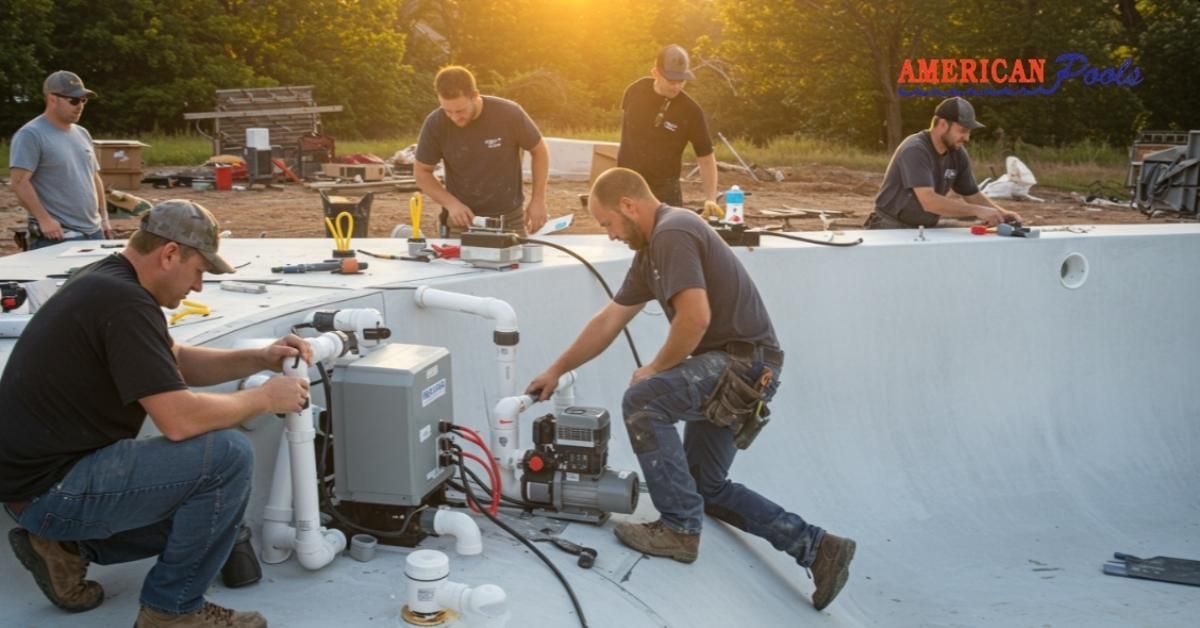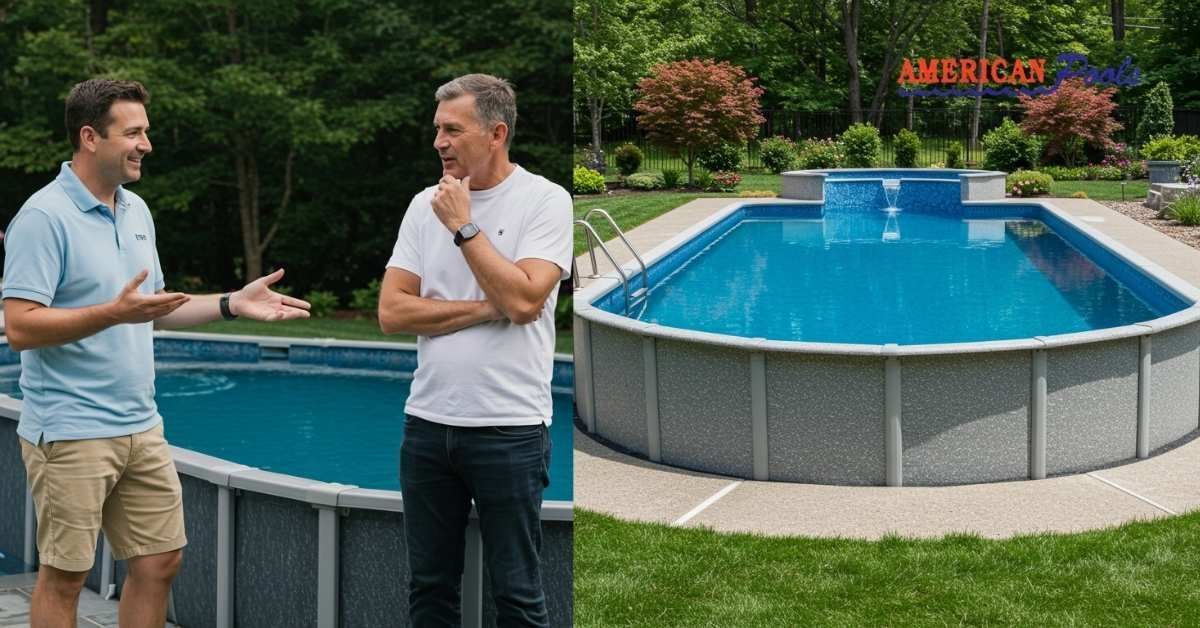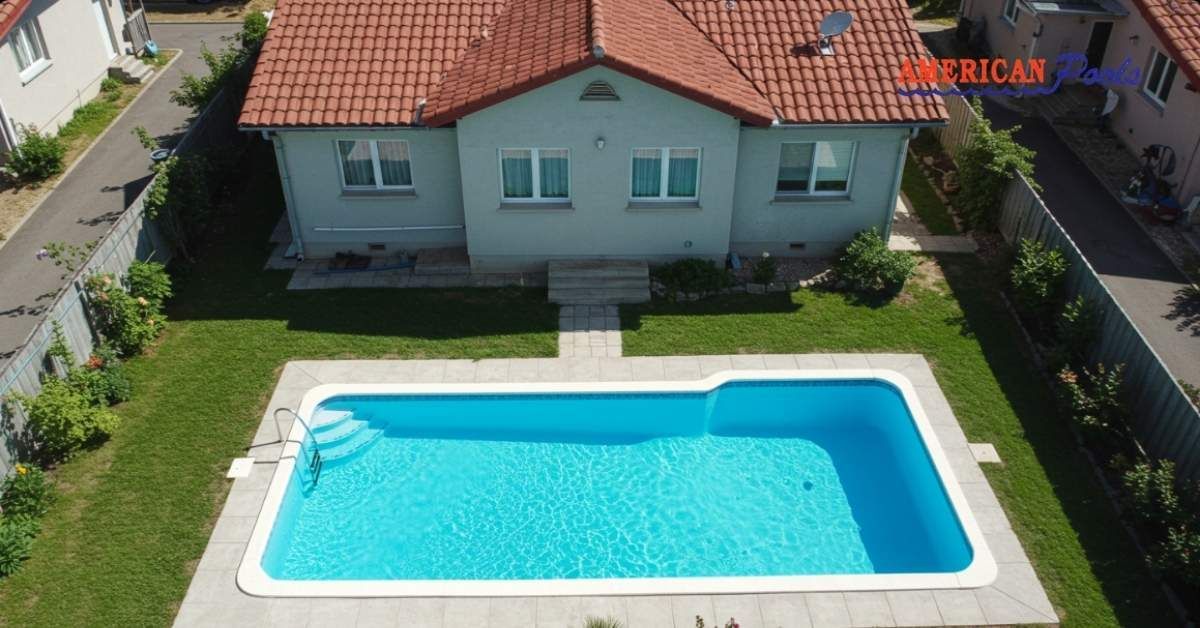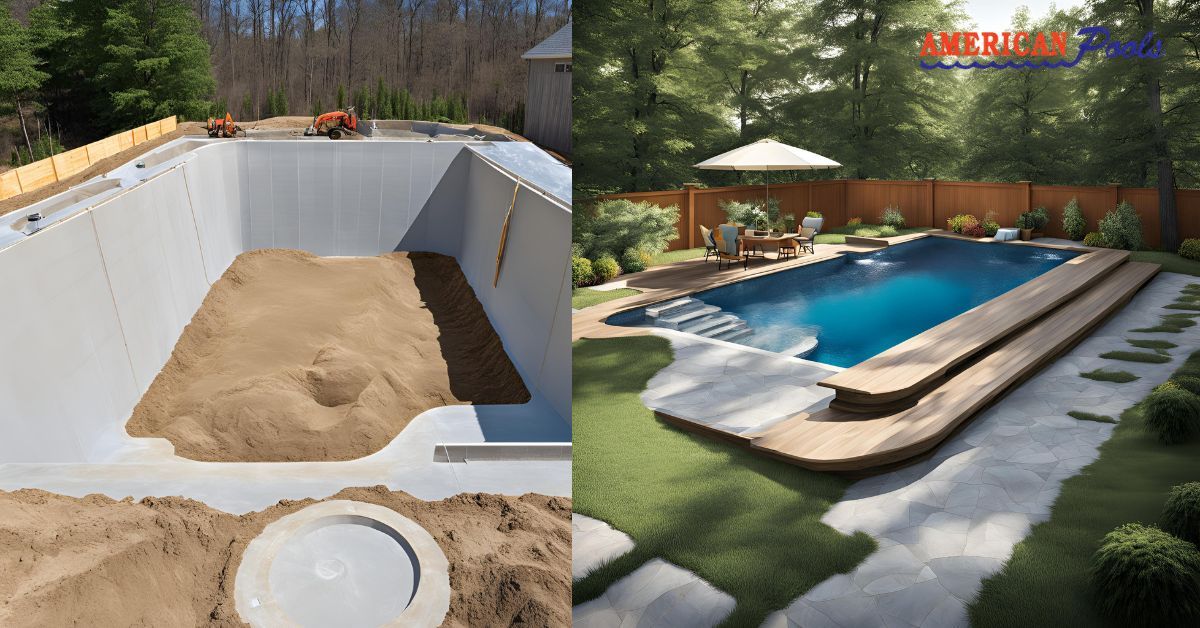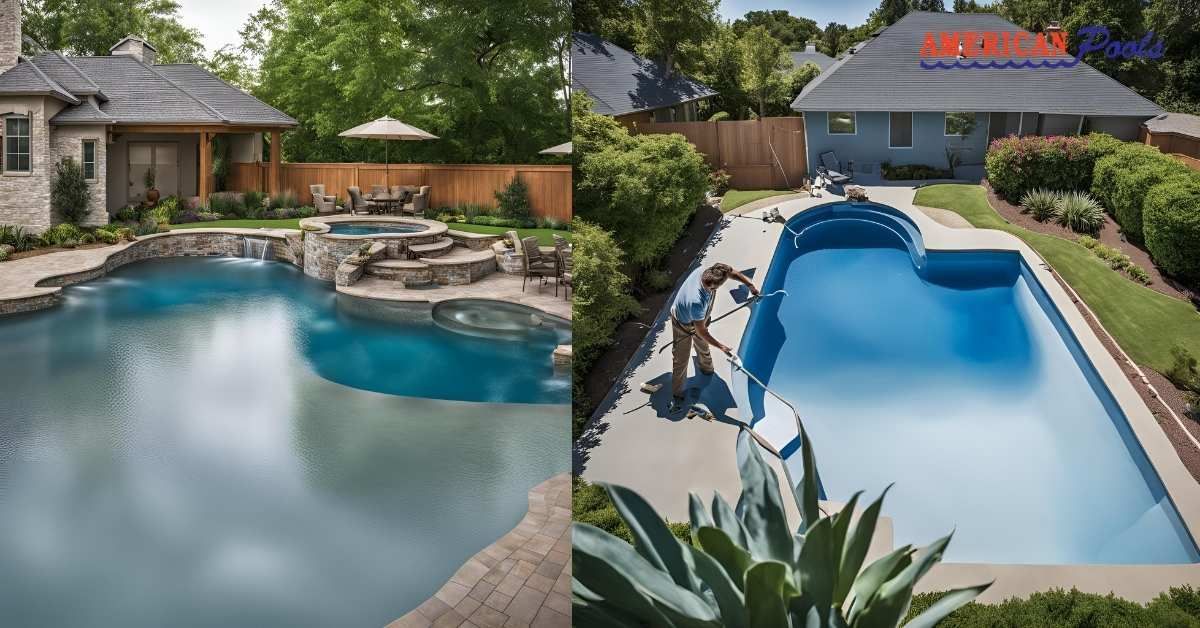How to Clean a Fiberglass Pool? Expert Tips for Homeowners
Pools Get Dirty—And That’s Okay
Let’s be honest—owning a pool is a joy, but cleaning it? Not always. After a sudden Houston downpour, I once walked outside and saw leaves, mud, and even a kid’s toy floating around. That’s when it hit me: Even the best pools need regular TLC.
If you own a fiberglass pool—or manage one commercially—you’ve probably noticed it’s much easier to care for than other types. But “easier” doesn’t mean “effortless.” Whether you're a homeowner or a commercial property owner, understanding how to clean a fiberglass pool the right way is key to protecting your investment and keeping it beautiful year-round.
Why Fiberglass Pools Need Special Care
Fiberglass pools are loved for their smooth, non-porous surface, which resists algae, absorbs fewer chemicals, and feels great underfoot. But they also come with one key maintenance rule:
Do not use abrasive tools or harsh cleaners.
The gel coat finish that makes fiberglass so durable and low-maintenance is sensitive to improper cleaning. Think of it like caring for a luxury car’s paint job—you wouldn’t scrub it with steel wool, right?
Essential Tools for Cleaning a Fiberglass Pool
Before getting started, make sure you have the right tools. Using the wrong equipment can damage your pool’s surface.
| Tool | Purpose |
|---|---|
| Soft-bristle pool brush | Removes algae and debris without damaging the gel coat |
| Pool vacuum (manual or robotic) | Picks up dirt and fine particles from the floor |
| Pool skimmer net | Collects surface debris like leaves and bugs |
| Non-abrasive fiberglass-safe cleaner | Treats waterline stains without harming the surface |
| Water testing kit | Ensures proper pH, chlorine, and chemical levels |
Step-by-Step: How to Clean a Fiberglass Pool
Step 1: Skim the Surface Daily
Use a skimmer net to remove floating debris such as leaves, insects, and pollen. This simple task prevents dirt from sinking to the bottom and reduces strain on your filter system.
Step 2: Vacuum the Pool Floor Weekly
Debris often settles at the bottom. A manual or robotic pool vacuum is essential to keep the pool floor spotless. Move the vacuum slowly to prevent stirring up particles.
Step 3: Brush the Walls and Waterline
Use a soft-bristle brush to gently scrub the pool walls and waterline. Focus on areas where body oils and sunscreen tend to collect. Never use abrasive brushes, as they can scratch the fiberglass.
Step 4: Balance Your Pool Water Chemistry
Test your pool water at least once a week using a water test kit. Proper chemical balance not only keeps the water clear but also protects the fiberglass surface.
Ideal Levels:
- pH: 7.4–7.6
- Alkalinity: 80–120 ppm
- Calcium Hardness: 200–400 ppm
- Chlorine: 1–3 ppm
Unbalanced water can lead to scaling, cloudy water, or even surface damage over time.
Step 5: Shock the Pool (as Needed)
If your pool has been heavily used or exposed to a storm, consider shocking it. Pool shock eliminates bacteria and organic contaminants. Use a fiberglass-safe product, and avoid swimming until levels return to normal.
Troubleshooting Common Issues
Even with regular care, issues can arise. Here's how to handle the most common problems:
| Issue | Cause | Solution |
|---|---|---|
| Cloudy water | Poor filtration or chemical imbalance | Clean filter, test water |
| Waterline stains | Sunscreen, oils, hard water | Use a non-abrasive cleaner |
| Algae growth | Low chlorine levels | Shock the pool and brush thoroughly |
| Calcium buildup | High calcium hardness | Adjust chemistry and clean gently |
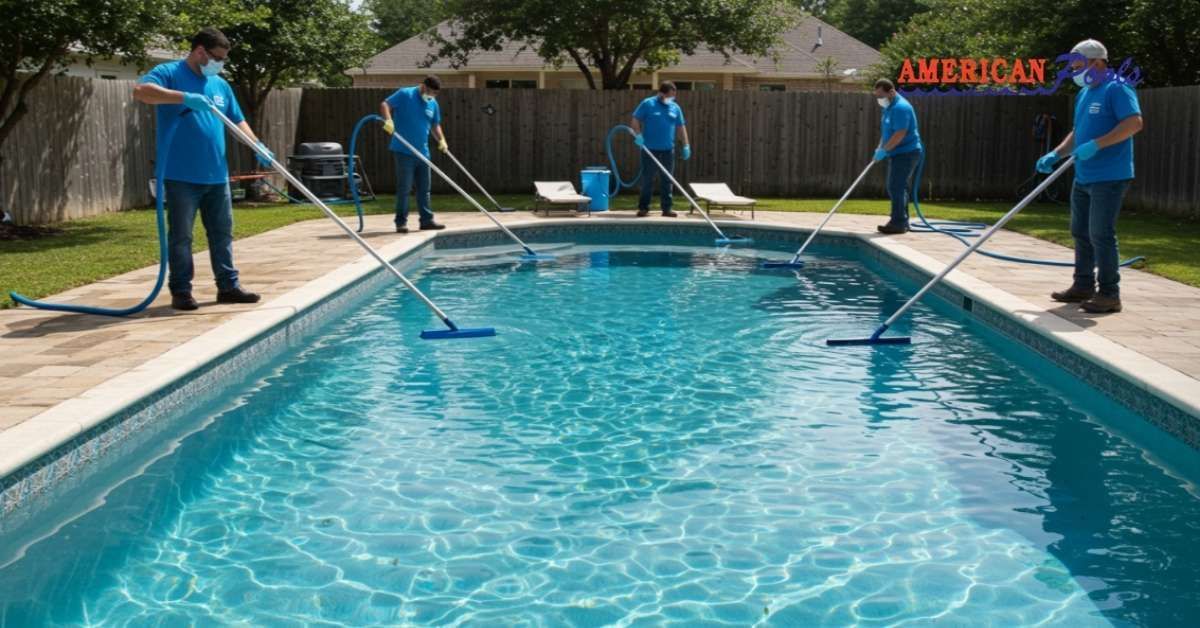
Maintenance Checklist for Homeowners & Commercial Pool Owners
Use this simple schedule to stay ahead of potential issues:
| Task | Frequency |
|---|---|
| Skim surface | Daily |
| Brush walls & vacuum floor | Weekly |
| Test & balance water chemistry | Weekly |
| Deep clean filter system | Monthly |
| Inspect pool equipment | Monthly |
| Shock the pool | Seasonally or as needed |
Following this plan ensures your fiberglass pool remains in peak condition year-round.
Pro Tips from American Fiberglass Pools
With over 50 years in the pool industry, we’ve seen what works and what doesn’t. Here are a few tried-and-true tips from our team at American Fiberglass Pools:
- Don’t overclean. Excessive brushing wears down the surface.
- Invest in a robotic cleaner. It's time-saving and efficient.
- Maintain the area around your pool. Clean surroundings prevent debris.
- Address minor stains immediately. They’re easier to remove early on.
Most importantly, don’t hesitate to call in professionals if you're unsure. We serve Houston and surrounding areas with expert cleaning, resurfacing, and maintenance for residential and commercial fiberglass pools.
Conclusion: Professional Care Starts with Routine Maintenance
Owning a fiberglass pool means enjoying beauty, comfort, and efficiency. But, like any valuable investment, it requires proper care. By following a regular cleaning schedule, using the correct tools, and balancing your pool chemistry, you ensure your pool stays safe, clean, and visually stunning.
At American Fiberglass Pools, we specialize in helping homeowners and commercial clients protect their pools with expert service backed by five decades of experience. Whether you need cleaning, resurfacing, or just friendly advice, we’re here for you.
FAQs
1. How often should I clean my fiberglass pool?
You should clean your fiberglass pool weekly—this includes skimming, brushing, vacuuming, and testing the water. Monthly tasks like deep-cleaning the filter and inspecting equipment also help maintain performance and clarity.
2. What should I avoid when cleaning a fiberglass pool?
Avoid abrasive tools like steel brushes, acidic cleaners, or high-pressure washers. These can scratch or weaken the gel coat. Stick with soft-bristle brushes and fiberglass-safe products.
3. Can I pressure wash a fiberglass pool?
No. Pressure washing can cause surface damage or microcracks in the fiberglass. It’s better to use gentle manual cleaning methods with the right equipment.
4. Why does my fiberglass pool get cloudy even after cleaning?
Cloudiness is usually a result of poor water balance or filtration issues. Check your chemical levels, clean your filter, and ensure the pump is running long enough each day.

